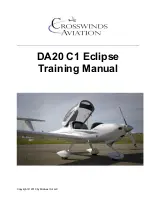
737 MAX Flight Crew Operations Manual
Airplane General, Emergency
Equipment, Doors, Windows -
Systems Description
MN-FLT-OH-201
1.40.23
Fire Extinguisher Usage
Each class of fire calls for specialized action. Using the wrong extinguisher may
do more harm than good. For your own protection, you should know these basic
types, how to use them, and why. These are the fire classification codes:
CLASS
CLASS
CLASS
COMBUSTIBLE MATERIALS
FLAMMABLE LIQUIDS
LIVE ELECTRICAL
UNITED STATES CLASS OF FIRES
EXTINGUISHER
TYPE
There are three common classes of fire:
paper, wood, fabric, rubber,
certain plastics, etc., where
quenching by water is effective.
gasoline, oils, greases, solvents,
paints, burning liquids, cooking
fats, etc., where smothering
action is required.
Water (H2O)
saturates material
rekindling
Halon or
Halon or
fires started by short circuit or
faulty wiring in electrical,
electronic equipment or fires in
motors, switches, galley equipment,
etc., where a nonconducting
extinguisher agent is required.
NOTE: Whenever possible, electrical
equipment should be de-energized
before attacking a class C fire.
A
B
C
TYPE
A
TYPE
B
TYPE C
and prevents
C
B
A
A
WATER ON FLAMMABLE LIQUID FIRES SPREAD THE FIRE. WATER ON A LIVE
ELECTRICAL FIRE COULD CAUSE SEVERE SHOCK OR DEATH.
WARNING: THE WRONG EXTINGUISHER ON A FIRE COULD DO MORE HARM THAN GOOD. FOR EXAMPLE,
RATED EXTINGUISHER IS NOT AS EFFECTIVE AS H2O ON A CLASS
FIRE.
equivalent
equivalent
March 1, 2021




































